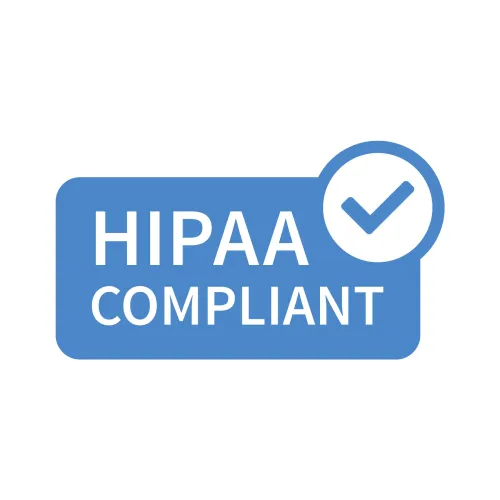Urology Coding Alert
Are You Taking Advantage of the Conscious Sedation Code Changes?
Don’t miss your chances to add this service to your physician’s bill.
One welcome change CPT® 2017 brought for many physicians was that surgical codes no longer include moderate (or conscious) sedation. Because of that, you’re allowed to report sedation in addition to the procedure code, provided the urologist clearly performs and documents the situation. Don’t miss how you can use this change to your best advantage.
Get Familiar with the New Codes
For coders accustomed to reporting conscious sedation, 2017 introduced another big change to the service – new procedure codes that replaced the longstanding options of 99143-99150.
Starting point: The new sedation codes you should be reporting are:
- 99151 – Moderate sedation services provided by the same physician or other qualified health care professional performing the diagnostic or therapeutic service that the sedation supports, requiring the presence of an independent trained observer to assist in the monitoring of the patient’s level of consciousness and physiological status; initial 15 minutes of intraservice time, patient younger than 5 years of age
- 99152 – … initial 15 minutes of intraservice time, patient age 5 years or older
- 99153 – … each additional 15 minutes intraservice time (List separately in addition to code for primary service)
- 99155 – Moderate sedation services provided by a physician or other qualified health care professional other than the physician or other qualified health care professional performing the diagnostic or therapeutic service that the sedation supports; initial 15 minutes of intraservice time, patient younger than 5 years of age
- 99156 – … initial 15 minutes of intraservice time, patient age 5 years or older
- 99157 – … each additional 15 minutes intraservice time (List separately in addition to code for primary service).
As you can see by the descriptors, the first three codes in the range describe moderate sedation that your surgeon performs in support of his own procedure, while the second three codes describe moderate sedation by a physician other than the physician performing the surgical procedure.
For each set of three codes, the first describes the initial 15 minutes for a patient younger than 5 years, while the second code describes the initial 15 minutes for a patient aged 5 or older. The third code is an add-on code for additional 15-minute service intervals.
Guideline: According to CPT® explanations, moderate sedation codes “are not used to report administration of medications for pain control, minimal sedation (anxiolysis), deep sedation or monitored anesthesia care (00100-01999).”
The question every coder must know how to answer when reporting any type of sedation service is, “How deep is ‘deep’?”
“In moderate sedation, the patients are purposefully responsive and alert and don’t usually require additional intervention such as breathing assistance,” says coding educator Leslie Johnson, CCS-P, CPC. “It is in these deeper instances of sedation that become ‘anesthesia services’ and the codes usually billed by the anesthesiologist from 00100-01999 are more appropriate for the service.”
Get a Grip on New Intraservice Timeframes
When preparing to report moderate sedation, don’t miss the updated times 2017’s codes represent. Under the old codes, the intra-service time thresholds for moderate sedation were 30 minutes. Now, with the new 2017 codes, the threshold is 15 minutes.
How that translates: CPT® instructs that for any time-based code, a unit of time is attained when the midpoint is passed, unless there are code- or code range- specific instructions to the contrary in the guidelines, parenthetical instructions, or code descriptors. In a new section-instruction chart, CPT® 2017 tells you not to report a moderate sedation code if the intra-service time is less than 10 minutes — which overrides the standard “midpoint” time of 8 minutes for a 15-minute code. This is an important point that physicians and coders need to understand, says Michael Granovsky, MD, FACEP, CPC, President of LogixHealth, a national coding and billing company based in Bedford, Ma.
The updated 2017 guidelines also include more detailed descriptions of what the pre-, intra-, and post-service work periods include. You must follow these instructions if you want to choose the correct code — because only intra-service time counts toward the moderate sedation codes.
Steer clear: You should not include the following pre-service work components when determining intra-service time:
- A thorough screening history involving assessment of the patient’s past medical and surgical history with particular emphasis on cardiovascular, pulmonary, airway, or neurological conditions, review of the patient’s previous experience with anesthesia or sedation and any family history of sedation complications, summary of the patient’s present medication list and any drug allergy and intolerance history
- A physical exam including focused emphasis on the mouth, jaw, oropharynx and airway for Mallampati score assessment, chest, lungs, heart and circulation, vital signs including oxygenation with end tidal CO2 when indicated
- A review of any pre-sedation diagnostic tests, completion of a sedation assessment form and obtaining informed consent
- Starting IV access and fluids to maintain patency.
Other services commonly associated with post-procedure work are also not included when you’re calculating intra-service times. These include:
- Assessment of the patient’s vital signs, level of consciousness, neurological, cardiovascular and pulmonary stability in the post-sedation recoveryperiod
- Assessment of the patient’s readiness for discharge
- Documenting the sedation service
- Communicating to family members or caregivers regarding the sedation service.
Beginning and end: “Intra-service time begins with the administration of the sedating agent,” explains Granovsky. “It requires continuous face-to-face attention of the provider, and monitoring of the patient’s response to the sedation, periodic reassessments, and vital signs including oxygenation, heart rate, and blood pressure. The moderate sedation intra-service time ends when the procedure is completed, the patient is stable, and the provider performing the sedation ends personal face-to-face care of the patient.”
Related Articles
Urology Coding Alert
- Conscious Sedation:
Are You Taking Advantage of the Conscious Sedation Code Changes?
Don’t miss your chances to add this service to your physician’s bill. One welcome change [...] - Terminology Refresher:
Remember What Qualifies as Conscious Sedation
Local anesthesia with conscious (or moderate) sedation is safe and effective for patients undergoing simple [...] - Modifiers:
Yes, You Can Sometimes Bill for a Cystoscopic Examination With an E/M Service - Do You Know When?
Check out 3 scenarios that may let you append modifier 25 to seal the deal. [...] - You Be the Coder:
Diagnosis for Biochemical Failure
Question: We have a patient who had a radical prostatectomy for prostate cancer four years ago [...] - Reader Question:
Begin With 55876 for Gold Seed Marker Placement
Question: Our urologist completed gold seed marker placement in preparation for future cyberknife radiation therapy. How [...] - Reader Question:
Submit C61 for Second Prostate Biopsy
Question: A positive prostate biopsy led to a patient being diagnosed with prostate cancer in 2012. [...] - Reader Question:
Buccal Graft Excision Takes You From 40818 to 20926 or 15240
Question: My urologist performed a urethroplasty and a buccal graft during the same encounter. How should [...] - Reader Question:
Code TURBT From Op Report, Not Path Report
Question: I have a question regarding TURBT. I have been told that I can no longer [...] - Reader Question:
Choose From 3 Options for In-Office Biopsy Code
Question: What are our best CPT® options when we’re coding for a prostate biopsy in the [...]




